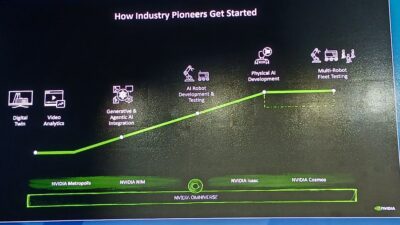Robotics are being used in various surgical sectors to aid in precision, efficiency, and much more. Orthopedic surgery is currently the most developed market.

Robotic systems are increasingly being used to facilitate and optimize the positioning of instruments and tools during surgery. These systems simplify operating room workflows. They ensure that surgical tools are inserted at the appropriate angle in order to obtain the best possible outcome. The level of precision required often can’t be achieved by humans, who are prone to involuntary tremors and sub-optimal vision. The robots merely place the instrument at the desired location. The entirety of the procedure is performed by the surgeon. The robot is simply a tool to facilitate planning and optimal instrument positioning. IDTechEx’s new report, “Innovations in Robotic Surgery 2020-2030”, offers a comprehensive analysis of this emerging technology.
Most robotic systems for surgical tool positioning are image-guided platforms designed to accurately identify and target a given site on the body. The robot guides surgeons’ movements and prevents them from deviating from the planned insertion path. This technology makes surgery safer and quicker, thereby accelerating patient recovery and improving medical outcomes. Robotic manipulation reduces the need for manual interaction, thus decreasing the risk of potential human errors.
In theory, robotic guidance and positioning systems are advantageous for any procedure that must be conducted with high precision. The aim is to reduce the length of hospital stays and improve patient outcomes by increasing the efficiency of surgery. Today, this market is valued at over $1.2 billion. The main surgical sectors that benefit from this technology are orthopedic surgery, neurosurgery, laser therapy and biopsy. Orthopedic surgery is by far the most developed market.
A major challenge of orthopedic surgery is implant positioning and accuracy. Robots lend themselves well to this application, as computer-aided navigation can help surgeons identify and target the area of interest with precision. Robotic orthopedic surgery systems are generally used to conduct spinal, knee and hip procedures. Stryker, a giant in the field of orthopedic care, has developed a robotic instrument positioning platform, Mako, for orthopedic knee surgery. It allows the surgeon to plan the intervention in advance, using virtual models of the patient’s anatomy constructed from pre-operative MRI or CT scans. Markers and stereoscopic cameras track and guide the surgeon’s tools in real time. The robotic components provide enhanced levels of stability and precision that are not possible to achieve by hand, thereby ensuring that the screw or implant is inserted at exactly the right angle and depth. This improves the efficiency, speed and safety of the surgery, and as a result reduces the length of hospital stays and improve patient outcomes.
Most tool positioning robots designed for neurosurgery perform stereotactic drilling, a form of surgical intervention that locates small targets inside the skull using a three-dimensional coordinate system and performs a type of procedure on them (e.g. ablation, injection, stimulation, implantation, etc). Stereotactic drilling is usually done manually using a frame and robots improve this method. Renishaw manufactures the neuromate robotic system, which provides consistent, rapid and precise instrument positioning for stereotactic neurosurgical procedures. It allows surgeons to avoid damaging vital structures, which can be challenging with a conventional stereotactic frame. Pre-operative MRI and CT scans of the patient are processed by the neuromate neurosurgical planning software and transformed into a virtual model of the patient’s brain. Surgeons control the robot using a handheld controller. They can use drills, guide tubes, biopsy needles and catheters with neuromate. The robotic platform also comes with a laser tool, which is used to check the patient registration and to mark the entry points on the patient head before surgery. Applications for this technology include neuroendoscopy and electrode implantation procedures for deep brain stimulation.
Lasers can also be positioned robotically in order to conduct surgery. Robotic laser positioning systems can be used for treating vascular lesions or conducting eye surgery. Kuka developed a laser guidance surgical robot in collaboration with Applied Artificial Intelligence (2AI) Laboratory. The technology, called LaserNAVI, automatically conducts medical laser treatments for vascular (venous) lesions. Traditionally in medical laser treatments, the doctor directs the laser by hand. The doctor needs to get the correct distance between the vein and laser, and to follow the lesion exactly, for the procedure to be successful. This process is tiresome and repetitive for doctors, which can lead to mistakes and complications. LaserNAVI uses its two integrated cameras combined with AI algorithms to detect unhealthy veins. The system uses near infrared light to identify the blood vessels and calculates the distance and trajectory automatically. First, surgeons point the infrared camera integrated into the robot to the lesion site. They then mark the beginning and end of the lesion on the display screen, after which the robot initiates laser treatment of the targeted venous area. This system is particularly advantageous for the treatment of microvessels for which handheld devices are not precise enough. It compensates for patient movement in real time so that the laser sticks to the required path.
Biopsies are another potential application of robotic systems for instrument positioning. In order to provide accurate information regarding the pathology of an organ, biopsies must be performed with great precision so that the desired cells can be removed without touching the surrounding tissue. This level of precision often can’t be achieved by humans, who are prone to involuntary tremors and sub-optimal vision. Robots enable the surgeon to mark the desired location and ensure that the needle is inserted in exactly the right place. XACT Robotics has produced a hands-free robotic system that provides precision when advancing needles and other instruments towards hard to reach targets. The XACT device combines image-based planning and navigation with instrument insertion and steering capabilities. It is designed for percutaneous procedures like biopsies but can also be used for other procedures, such as tumor ablation and abscess drainage.



